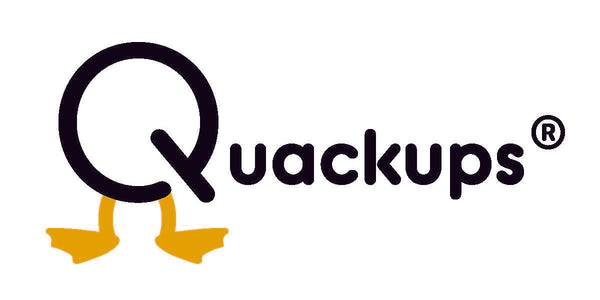In a world where technology intertwines with every aspect of life, the realm of birdwatching has not been left behind. The growing trend of integrating cameras with bird feeders is transforming the way we observe and interact with our feathered friends.
This innovative approach offers a unique window into the lives of birds, allowing enthusiasts to capture and share stunning, up-close views of various species right from their own backyards.

In this exploration, we aim to thoroughly assess the implications of this trend. We will delve into the pros and cons of using camera-equipped bird feeders, considering their impact not just on the quality of birdwatching experiences but also on the environment and bird populations.
This article seeks to provide a comprehensive overview of how these devices are reshaping our interaction with nature, highlighting the balance between technological advancement and ecological responsibility.
Understanding Bird Feeders with Cameras
Bird feeders with cameras represent a fascinating meld of nature observation and technology. Essentially, these devices are standard bird feeders equipped with cameras, designed to capture high-quality images or videos of birds as they feed.
The camera component, often discreetly integrated, enables birdwatchers to observe and record bird behavior without disturbing them, providing a window into the natural activities of various bird species from a close, yet unintrusive, vantage point.

The concept of combining bird feeders with cameras has evolved significantly over the years. Initially, it was a pursuit for professional ornithologists and dedicated hobbyists who rigged their feeders with bulky cameras.
Popular models in the market often include features like weatherproof design, HD video capabilities, and even solar-powered options for sustainability. Some are designed to send notifications to your smartphone when a bird is detected, allowing for real-time viewing.
The evolution of these devices reflects a growing interest in birdwatching as a pastime and an increasing desire to connect with nature through technology.

Pros of Bird Feeders with Cameras
Enhanced Birdwatching Experience:
These feeders revolutionize birdwatching by providing an intimate view of avian life. They allow enthusiasts to observe and record bird behavior remotely, without disrupting their natural activities. This close-up interaction deepens our understanding and appreciation of birds in their natural habitat.
Educational Tool:
Beyond entertainment, these feeders serve as valuable educational resources. They offer real-time insights into avian behavior and ecology, making them excellent tools for schools, nature centers, and birdwatching enthusiasts. This hands-on learning approach brings the intricacies of bird life into clearer focus.

Entertainment and Relaxation:
Watching birds through these camera-equipped feeders offers therapeutic benefits. It’s a source of relaxation and enjoyment, providing a peaceful escape into nature for individuals and families alike. This aspect of birdwatching can be particularly calming, transforming a simple hobby into a restorative experience.
Cons of Bird Feeders with Cameras
Potential Disturbance to Wildlife:
These feeders can inadvertently alter bird behaviors. There’s a risk of birds becoming habituated to feeders, potentially leading to dependency. Additionally, they might disrupt natural predator-prey dynamics and bird interactions, altering essential ecological processes.
Ethical Considerations:
Utilizing cameras to observe birds stirs up ethical debates. Some argue it intrudes on the privacy of wildlife, and there’s a concern that such footage could be used for commercial purposes, potentially exploiting the very creatures it aims to admire.

Maintenance and Technical Issues:
Operating these high-tech feeders can present practical challenges. They require consistent maintenance and can encounter various technical issues, from setup difficulties to potential unreliability. Additionally, the cost of purchasing and running these devices, including potential ongoing expenses, is a significant factor to consider.
Environmental Impact of Bird Feeders with Cameras
Positive Contributions:
- These feeders can be instrumental in citizen science projects, allowing individuals to collect valuable data on bird behavior and patterns. This contributes significantly to scientific research and understanding of avian species.
- They also play a role in raising awareness about the importance of bird conservation and habitat protection, helping to educate the public on these critical issues.
Negative Impacts:
- There are concerns that these feeders might alter natural feeding behaviors and foraging patterns of birds, potentially disrupting their ecological role.
- Additionally, they might attract non-native or invasive species, which can have unintended consequences on local ecosystems.

Sustainability Considerations:
- When using these devices, it’s important to consider the environmental footprint of the materials and practices involved. Choosing eco-friendly materials and sustainable practices is crucial.
- It’s essential to balance the benefits of technology with environmental responsibility, ensuring that our fascination with technology does not outweigh our commitment to ecological sustainability.
Conclusion
In summary, bird feeders with cameras offer a unique blend of technology and nature, enhancing observation and education while fostering a connection with wildlife. However, they also pose challenges, such as potential disturbances to birds’ natural behaviors and ethical concerns.
This calls for a thoughtful and responsible approach to their use, balancing the benefits with mindful consideration of their impact.

As we navigate the intriguing world of camera-equipped bird feeders, let’s embrace this technology with a sense of responsibility and mindfulness. We encourage bird enthusiasts to delve into these enriching birdwatching activities, always prioritizing the welfare of our feathered friends and the environments they inhabit.
It’s imperative that our engagement not only brings us closer to nature but also actively supports the health and sustainability of the ecosystems we cherish. In doing so, we can ensure that our fascination and interaction with the natural world remain both fulfilling and harmonious.

